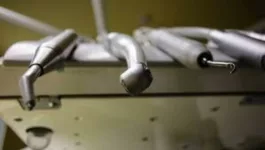Are you a dentist, in training or considering entering the profession? Well, it’s worth considering how the dental industry has changed in recent years, and while the old saying goes ‘people will always need their teeth’, it’s not a profession without challenges! That said, there have some also been some great advances in the industry too, making dentists’ jobs easier and more rewarding than before. Read on to find out more…
More over-the-counter products are available for home use
Firstly, some dentists think that the biggest change in the industry is the greater number of options available for patients to use at home. For example, electric toothbrushes are now mainstream and affordable, with most households owning at least one power toothbrush to keep their teeth clean. The choices of floss are as vast and varied, and there are toothpastes designed for children, for individuals with sensitive teeth and for people with orthodontics. On the whole, this means that there are more tools and products to help our population look after their teeth, which is probably the reason that 94% of adults in the UK still have their own teeth.
Better technology and protective equipment for dentists
Something else that dentists have noticed over the last few decades is an improvement in equipment and technology. While we believed that we were at the forefront of cutting edge technology many years ago, looking back helps us to see that we’re now using gadgets and gizmos that are far more sophisticated than they used to be. There’s a greater range of personal protective equipment on offer for dentists (the likes of which is available from professional suppliers such as Brosch Direct), as well as other improvements such as ergonomic seating, lighting and better magnification capabilities.
A rising popularity in teeth-whitening products
A bright, white smile has been popular for a number of decades, but the availability and ‘normality’ of teeth whitening products is another change the dental industry has noticed. Unfortunately, many people are prepared to cut corners and buy home-whitening kits or visit a beautician, both of which can have the effect of weakening teeth if the kit contains too much peroxide or masking underlying damage that needs attending to. Only registered dentists, dental therapists, dental hygienists and clinical dental technicians are allowed to whiten teeth, but this is something that the public perhaps don’t know yet – something that is beginning to challenge dentists and probably will continue to do so in the future.
Greater awareness of the effects of smoking
However, one thing that has changed in the dental industry is the number of patients who are smokers. The number of smokers has decreased over the last few decades, with approximately 19% of the population now smoking compared to 35% in the early 1980s. As a result, dentists are seeing fewer patients affected by tooth staining, gum disease, tooth loss and cancer as a direct result of smoking.
Stronger understanding of the effects of diet
Similarly, the dental industry has noticed that the public is now generally better-educated about how their diet affects their teeth than they used to be. For instance, it’s common knowledge that sugar, fruit juices and alcohol are bad for our teeth, and that snack foods such as crisps can easily get trapped between our teeth and lead to problems.
More children suffering with rotting teeth
However, while there’s better education around our diets and dental hygiene, the dental industry is sadly having to do more and more work with children who are suffering with problems relating to their teeth. According to the Oral Health Foundation, almost a third of children starting school each year have signs of tooth decay, and tooth extractions are the biggest reason that children are being placed under general anaesthetic in the UK.
Due to the fact that 15% of a child’s daily calories is now sugar, and that roughly 40% of children don’t visit the dentist every year, there’s been an almost 20% rise in the number of children being admitted to hospital with tooth decay in the last five years alone. This indicates that there’s a serious challenge on the horizon for the dental industry, and that some changes aren’t always for the better…








